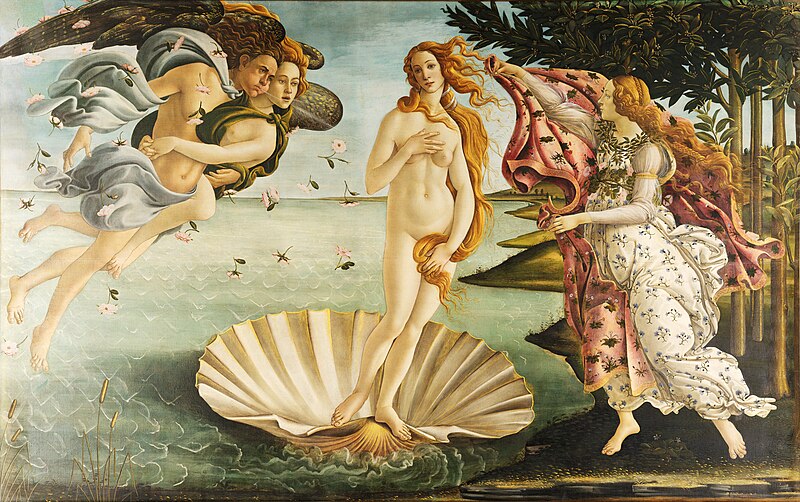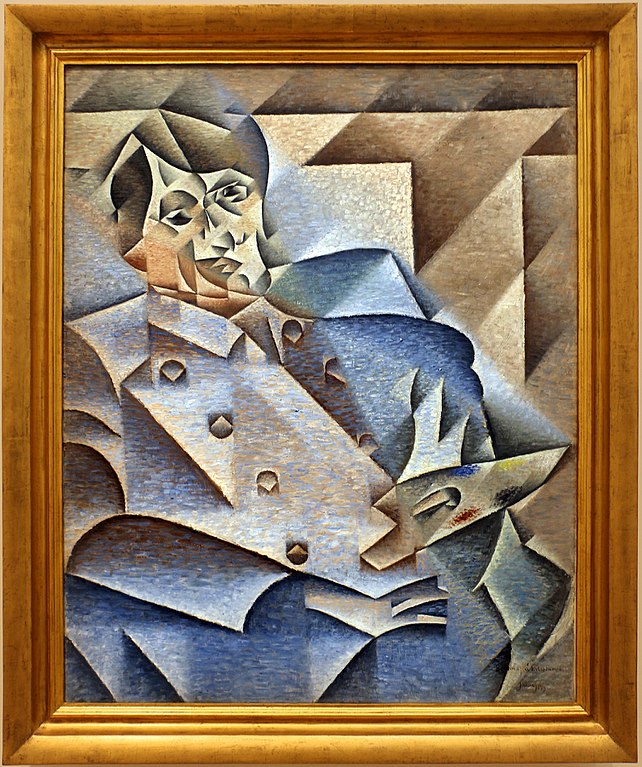Art: 15 Most Famous Portraits
Immerse yourself in the enchanting realm of artistic expression. Explore a captivating adventure through the 15 most renowned portraits ever crafted. Portraiture is the skill of capturing a person’s unique qualities and character in a single picture. Exploring history is akin to a thrilling treasure hunt that reveals the tales of our ancestors. These masterful portraits were created by renowned artists spanning various historical periods. Their stunning appearance and deep emotional bonds continue to captivate and enchant us. Continue reading as we delve into these enduring works of art. We will explore the origins and uncover the hidden narratives behind their making. These captivating portraits will transport you to a world where artistic expression merges with reality, through enigmatic smiles and penetrating gazes. In this artistic realm, brushstrokes tell stories of love, strength, and the resilience of humanity. Prepare yourself to be captivated by the charm and fascination of artwork. We will explore the most renowned painted portraits in great detail.
Also Read: 30 Famous Portrait Painters that History Will RememberJan van Eyck
1. “Mona Lisa” by Leonardo da Vinci

Image by Bronisław Dróżka from Pixabay
No conversation about renowned portraits would be complete without acknowledging the mesmerizing charm emanating from the “Mona Lisa,” a masterpiece created by the renowned Italian artist Leonardo da Vinci. Executed with remarkable precision and artistic finesse, this enigmatic painting was crafted during the Italian Renaissance. Leonardo da Vinci’s unparalleled attention to detail is evident in every brushstroke, lending the portrait an extraordinary sense of depth and realism. The subject’s enigmatic smile, shrouded in an air of mystery, has fueled countless debates and interpretations over the centuries. The Mona Lisa’s subtle expression and penetrating gaze seem to hold secrets known only to the artist himself.
10 Famous Artworks from Leonardo da Vinci
Practical Information
Year: 1503-1506
Artistic Period: Italian Renaissance
Style: High Renaissance
Catch a Glimpse @: The Louvre Museum in Paris, France.
2. “The Last Supper” by Leonardo da Vinci

Leonardo da Vinci, Public domain, via Wikimedia Commons
This masterpiece captures a pivotal moment in Christian history. The final meal was shared by Jesus Christ and his disciples before his crucifixion. Leonardo’s meticulous attention to detail and innovative technique set this painting apart. It measures an impressive 4.6 meters by 8.8 meters. The composition is carefully arranged, with Jesus at the center, surrounded by his twelve apostles, each displaying unique and emotive expressions. Leonardo ingeniously captures the precise moment when Jesus reveals that one of his disciples will betray him.
The painting’s enduring allure lies in its ability to evoke profound emotions and engage viewers with its compelling storytelling. Leonardo’s use of scientific principles, such as anatomical accuracy and the study of light and shadow, showcases his innovative approach to art. The painting’s portrayal of religious figures with human-like qualities marked a departure from the traditional iconography of the time. Sparking debates and influencing subsequent artistic movements.
Top 10 Facts about the Last Supper from Leonardo da Vinci
Practical Information
Year: 1495-1498
Artistic Period: Italian Renaissance
Style: High Renaissance.
Catch a Glimpse @: Santa Maria delle Grazie in Milan, Italy.
3. “Girl with a Pearl Earring” by Johannes Vermeer

Txllxt TxllxT, CC BY-SA 4.0, via Wikimedia Commons
This timeless masterpiece captivates viewers with its enigmatic beauty and exquisite technique. Admired for its subtle use of light, delicate brushwork, and the captivating gaze of the young subject. The painting continues to evoke intrigue and fascination. The painting’s enduring fame can be attributed to several factors. Firstly, its technical mastery showcases Vermeer’s extraordinary skill in capturing the effects of light and shadow. It is evident in the pearl earring that gives the artwork its name.
The interplay of light and dark contribute to the painting’s overall allure. Secondly, the subject’s enigmatic expression has mesmerized viewers for centuries. The young woman’s direct gaze, with her eyes slightly averted, is significant. It suggests a sense of mystery and invites speculation about her identity and thoughts. This ambiguity allows for a personal and emotional connection between the viewer and the artwork. Furthermore, the painting’s historical significance adds to its prominence.
Top 10 Facts about the Girl With a Pearl Earing from Johannes Vermeer
Practical Information
Year: 1665
Artistic Period: Dutch Golden Age
Style: Baroque
Catch a Glimpse @: Mauritshuis Museum in The Hague
4. “The Scream” by Edvard Munch

Mariordo (Mario Roberto Durán Ortiz), Public domain, via Wikimedia Commons
“The Scream” is a well-known portrait. From art enthusiasts and the general public alike, they are captivated. This iconic masterpiece evokes a sense of existential angst and emotional turmoil. This makes it a poignant representation of the human condition. Munch used vivid and intense colors, bold brushstrokes, and distorted figures. The result: a haunting and visceral experience for the viewer. The portrait carries universal themes of anxiety, despair, and isolation. They seem to resonate across time and cultures, making them a timeless symbol of the human psyche. It appeals to those who seek to immerse themselves in the powerful expression of human emotion captured by Munch’s skilled hand.
Practical Information
Year: 1893
Artistic Period: Symbolism
Style: Expressionism
Catch a Glimpse @: The National Gallery in Oslo, Norway
5. “The Persistence of Memory” by Salvador Dalí
The painting showcases a peculiar landscape where melting clocks seem to defy the laws of physics, draped over various objects like tree branches and a strange creature resembling a face. Dalí’s meticulous attention to detail is evident in the intricate brushwork and precise rendering of every element, enhancing the overall dreamlike quality of the piece. The juxtaposition of the melting clocks against familiar objects creates a sense of unease, inviting viewers to question the nature of reality and delve into the recesses of their own subconscious. This provocative artwork sparks conversations about the mysteries of the mind and the significance of dreams. Its presence in (MoMA) in New York City – a prestigious institution further solidifies its status as a masterpiece and a testament to Dalí’s artistic genius.
For more Information on Salvador Dali Read This Articles Below:
Top 10 Things to Know about the Persistence of Memory by Salvador Dali
15 Salvador Dalí’s Most Famous Paintings
Practical Information
Year: 1931
Artistic Period: Surrealism
Style: Surrealism.
Catch a Glimpse @: Museum of Modern Art (MoMA) in New York City
6. “The Starry Night” by Vincent van Gogh

Vincent van Gogh, Public domain, via Wikimedia Commons
Vincent van Gogh portrayed the nocturnal sky ethereally in his masterpiece, “The Starry Night,” making it renowned. Van Gogh’s distinctive style is showcased in the painting through its swirling brushstrokes and vibrant colors. The painting also shows how profoundly deep his emotions were. (Active voice) Van Gogh prominently depicts stars, revealing his fascination with the celestial realm. Luminous and dynamic orbs depict them. Swirling patterns and a rich palette wash the sky, emanating a sense of movement and energy. Van Gogh’s nocturnal universe immerses viewers.
The canvas seamlessly merges reality and imagination in a dreamlike scene, measuring 73.7 x 92.1 cm (29 x 36 1/4 in). Van Gogh’s distinctive style is showcased in “The Starry Night”. Swirling brushstrokes and vibrant colors characterize it. The dynamic brushwork portrays movement and energy. The glowing yellow stars and a crescent moon are juxtaposed against the rich blues dominating the night sky. Depicting the tree in dark greens, the foreground cypress adds a sense of stability and symmetry to the composition.
Top 10 Interesting Facts about Vincent van Gogh
Practical Information
Year: 1889
Artistic Period: Post-Impressionism
Style: Post-Impressionism
Catch a Glimpse @: Museum of Modern Art (MoMA) in New York City
7. “Whistler’s Mother” by James McNeill Whistler

James McNeill Whistler, Public domain, via Wikimedia Commons
This portrait is cherished for its profound artistic significance and cultural impact. This iconic masterpiece, formally titled “Arrangement in Grey and Black No. 1,” captures the serene and dignified figure of Whistler’s mother, Anna McNeill Whistler. This epitomizes Whistler’s aesthetic principles and his mastery of composition, color, and form. Whistler’s deliberate choice of a restrained palette, predominantly grayscale tones with subtle accents, lends the artwork a timeless and universal quality.
The composition showcases a harmonious balance between the figure and her surroundings, reflecting Whistler’s emphasis on design and the unity of elements. The detailed depiction of his mother’s facial expression and her contemplative gaze conveys a sense of maternal affection. A quiet strength resonates with audiences on a deeply emotional level. The significance of “Whistler’s Mother” extends beyond its artistic merits. The painting has become an enduring symbol of motherhood and familial love.
Practical Information
Year: 1871,
Artistic Period: Aestheticism
Style: Realism
Catch a Glimpse @: Musée d’Orsay in Paris, France
8. “Self-Portrait with Two Circles” by Rembrandt

Rembrandt, CC BY-SA 4.0, via Wikimedia Commons
Painted by the Dutch master, it is proof of exceptional skill and perfect use of light and shadow. The painting draws viewers into a deep connection with the artist’s inner world. What sets this portrait apart is Rembrandt’s distinctive portrayal of himself. He captures his own likeness with an introspective and introspective gaze, inviting observers into his psyche. The details are intricate from the meticulously rendered facial features to the subtle play of light on the artist’s face. The composition of “Self-Portrait with Two Circles” is noteworthy. His figure emerges from the shadows and positions himself slightly off-center while two circles frame his head. The circles, add an enigmatic touch to the painting, emphasizing the artist’s contemplative nature and his engagement with his own image. This iconic artwork continues to captivate art enthusiasts and scholars alike.
Practical Information
Year: 1665-1669
Artistic Period: Dutch Golden Age
Style: Baroque.
Catch a Glimpse @: Kenwood House in London
9. “Portrait of Adele Bloch-Bauer I” by Gustav Klimt

Gustav Klimt, Public domain, via Wikimedia Commons
The Portrait of Adele Bloch-Bauer I, painted by Gustav Klimt, is a great piece. This stunning art captures intricate details and mesmerizing beauty. Adele Bloch-Bauer, the subject of the painting. They were close friends with the artist and a prominent Viennese socialite. The portrait showcases Klimt’s distinctive style. His signature was elaborate patterns, golden hues, and a sense of ethereal elegance. The fascinating story behind it is what truly adds to the fame of this portrait. Adele Bloch-Bauer, known for her patronage of the arts, commissioned Klimt to create this masterpiece. This prestigious museum that houses it is dedicated to early 20th-century German and Austrian art.
Related Read: 15 Famous Austrian Painters
Practical Information
Year: 1907
Artistic Period: Vienna Secession
Style: Art Nouveau.
Catch a Glimpse @: The Neue Galerie in New York City
10. “American Gothic” by Grant Wood

Grant Wood, Public domain, via Wikimedia Commons
Grant Wood’s “American Gothic” is undeniably a great portrait. In this depiction, a stern-faced farmer and his daughter standing in front of a modest house, stuns. The use of sharp lines and contrasting colors make this artwork visually captivating. “American Gothic” embodies the spirit of the American heartland. Which is the resilience and determination of the hardworking individuals who shaped the nation. It has been widely reproduced and referenced in popular culture. It is an internationally recognized masterpiece.
Practical Information
Year: 1930,
Artistic Period: Regionalism
Style: American Gothic
Catch a Glimpse @: The Art Institute of Chicago
11. “The Birth of Venus” by Sandro Botticelli

Sandro Botticelli, Public domain, via Wikimedia Commons
This magnum opus portrays the birth of the goddess Venus, emerging from the sea foam fully grown and radiant. The painting’s ethereal atmosphere comes from meticulous attention to detail, graceful brushwork, and vibrant colors. It exudes a sense of balance and serenity with Venus at the center and a harmonious arrangement of figures and elements. The portrayal of Venus, characterized by her poised posture and gentle expression, epitomizes idealized beauty and feminine grace. “The Birth of Venus” captures the aesthetic ideals of its time. Furthermore, it showcases Botticelli’s ability to convey complex narratives through visual language. Its enduring popularity and critical acclaim solidify its status as a true masterpiece of art history.
Top 10 Remarkable Facts About Sandro Botticelli
Practical Information
Year: Mid-1480s
Artistic Period: Early Renaissance
Style: Early Renaissance
Catch a Glimpse @: The Uffizi Gallery in Florence
12. “Portrait of Dr. Gachet” by Vincent van Gogh

Vincent van Gogh, Public domain, via Wikimedia Commons
“Portrait of Dr. Gachet” is a moving look at the artist’s personal struggles and his never-ending search for solace in art. This remarkable picture catches resemblance of Dr. Paul Gachet, a committed doctor who gave care to van Gogh during his visit to the charming town of Auvers-sur-Oise. With its dynamic shades and striking brushwork, the composition fills in as a visual portrayal of van Gogh’s turbulent personal state and his enthusiastic endeavor to convey the intricacies of the human condition. ” Van Gogh’s “Portrait of Dr. Gachet” demonstrates his unrivaled capacity to imbue his portraits with raw emotion and profound introspection. The synthesis exemplifies the substance of Post-Impressionism, a development that looked to move past the limitations of Impressionism by underscoring emotional articulation and representative significance. The bold use of color and dynamic brushstrokes characterizes Van Gogh’s distinctive style.
Practical Information
Year: 1890
Artistic Period: Post-Impressionism
Style: Post-Impressionism.
Catch a Glimpse @: Musée d’Orsay
13. “Portrait of a Man in a Red Turban” by Jan van Eyck

Jan van Eyck, CC BY-SA 3.0, via Wikimedia Commons
This is an extraordinary masterpiece that exemplifies the artist’s remarkable precision and technical prowess. This portrait holds an unmistakable spot as one of the earliest and most remarkable works throughout the entire existence of oil painting. The intricate depiction of the sitter’s facial expressions, complemented by the intricate folds of the vibrant red turban, reveals the artist’s unrivaled command over realism. Notably, the inclusion of a convex mirror in the background further emphasizes van Eyck’s skillful portrayal of the physical world. The gallery that hosts this has an extensive collection that showcases a diverse range of artistic treasures. This masterpiece shows van Eyck’s unwavering dedication and meticulous craftsmanship.
20 Famous Renaissance Painters and Their Work.
Practical Information
Year: 1433
Artistic Period: Northern Renaissance
Style: Early Netherlandish
Catch a Glimpse @: The National Gallery, London
Book your Hotel Stay near The National Gallery via booking.com
14. “The Arnolfini Portrait” by Jan van Eyck

Jan van Eyck, Public domain, via Wikimedia Commons
This captivating masterpiece stands as a symbolic representation of a wealthy couple, showcasing the artist’s exceptional talent and attention to detail. Through his meticulous brushwork, van Eyck brings forth a wealth of intricacies within the painting. From the lavish garments worn by the subjects to the meticulously rendered objects that adorn the room. Such precision and observation reflect the artist’s profound technical skill and artistic prowess. One of the notable elements within “The Arnolfini Portrait” is the presence of a mirror in the background.
This mirror serves as a significant feature, as it reflects not only the couple but also two additional figures. It adds an air of intrigue and prompts viewers to ponder the deeper meaning behind the painting. The mirror’s inclusion raises questions regarding the relationship between the subjects and their connection to the surrounding world. Displayed alongside other masterpieces, this iconic artwork holds on its own. Jan van Eyck has the ability to capture the intricacies of human relationships through his meticulous observation and skillful implementation of symbolism.
Practical Information
Year: 1434
Artistic Period: Northern Renaissance
Style: Early Netherlandish
Catch a Glimpse @: The National Gallery
15. “Portrait of Pablo Picasso” by Juan Gris
“Portrait of Pablo Picasso” immortalizes the renowned artist in a vibrant and dynamic manner. Created during the pinnacle of the Cubist movement, this exceptional portrait exemplifies Gris’s extraordinary command over geometric forms and fragmented perspectives. With meticulous precision, Gris skillfully combines shapes, colors, and textures. He captures the very essence of Picasso’s artistic spirit. “Portrait of Pablo is the pinnacle of Gris’s innovative approach to painting. Gris’s deft brushwork and bold use of colors create a visually stimulating composition that invites viewers to explore the depths of Picasso’s character. The museum that houses it is dedicated to modern and contemporary art. It provides a fitting setting for Gris’s “Portrait of Pablo Picasso.”
Practical Information
Year: 1912, Artistic
Period: Cubism
Style: Analytical Cubism
Catch a Glimpse @: Museo Nacional Centro de Arte Reina Sofía, Madrid, Spain
Artists consider portraits to be important. Individuals across generations are captured in their essence and humanity. These really famous paintings, like the “Mona Lisa” by Leonardo da Vinci are cultural symbols. Art enthusiasts worldwide admire them. When Rembrandt painted “Self-Portrait with Two Circles,” he looked at himself and thought deeply about his feelings. “The Two Fridas” by Frida Kahlo shows how she felt having two personalities and lots of emotions. These portraits are famous outside the art world too. Cultural heritage and artistic excellence are represented by them now. We are invited to think about how being a human can be complicated. The lives of the portrayed people make us curious.
Planning a trip to Paris ? Get ready !
These are Amazon’s best-selling travel products that you may need for coming to Paris.
Bookstore
- The best travel book : Rick Steves – Paris 2023 – Learn more here
- Fodor’s Paris 2024 – Learn more here
Travel Gear
- Venture Pal Lightweight Backpack – Learn more here
- Samsonite Winfield 2 28″ Luggage – Learn more here
- Swig Savvy’s Stainless Steel Insulated Water Bottle – Learn more here
Check Amazon’s best-seller list for the most popular travel accessories. We sometimes read this list just to find out what new travel products people are buying.











